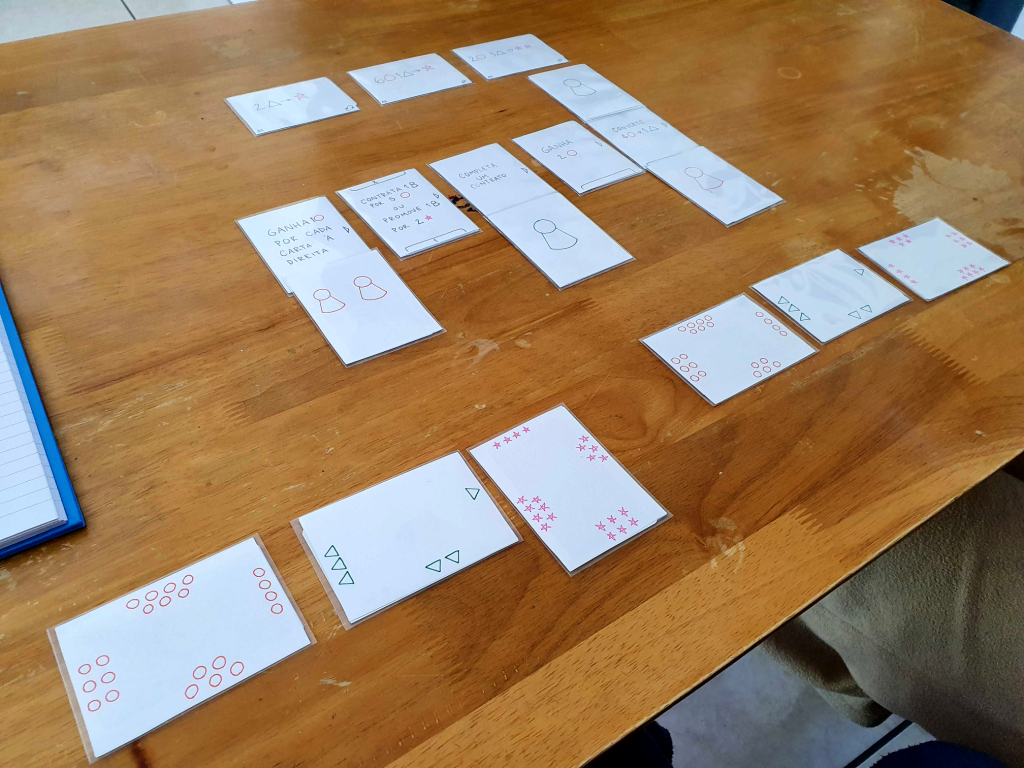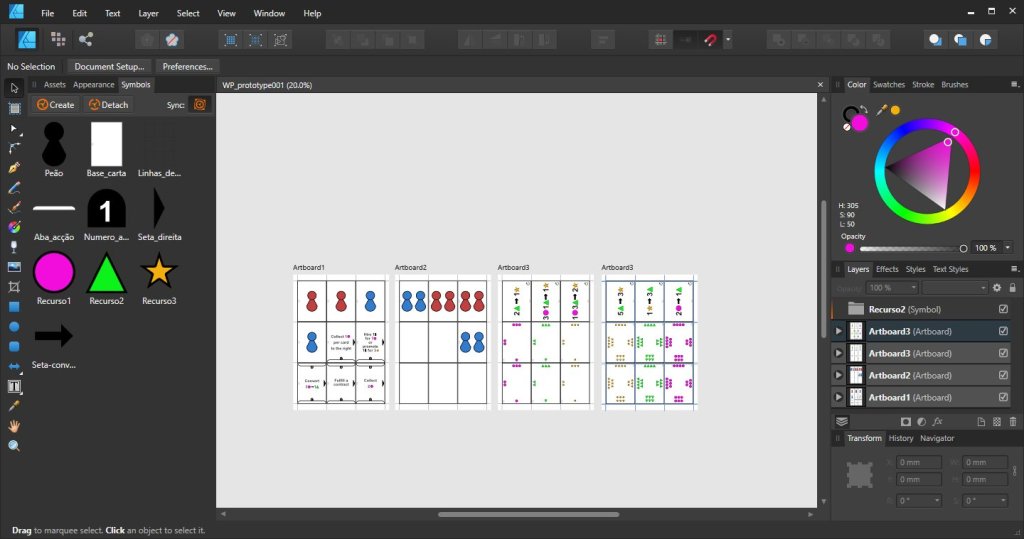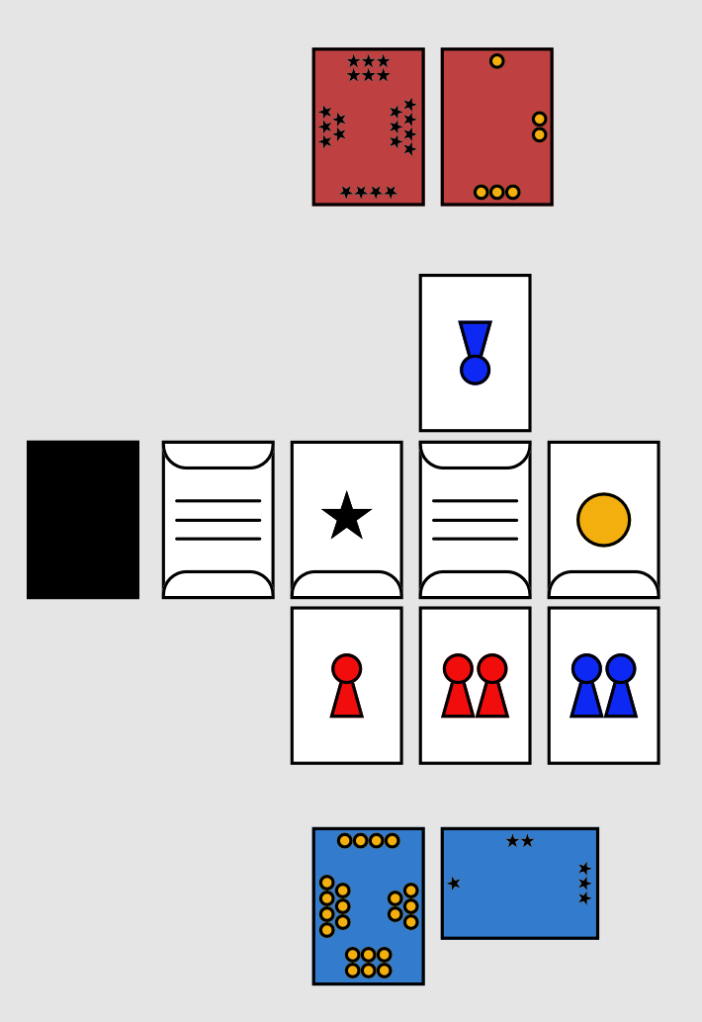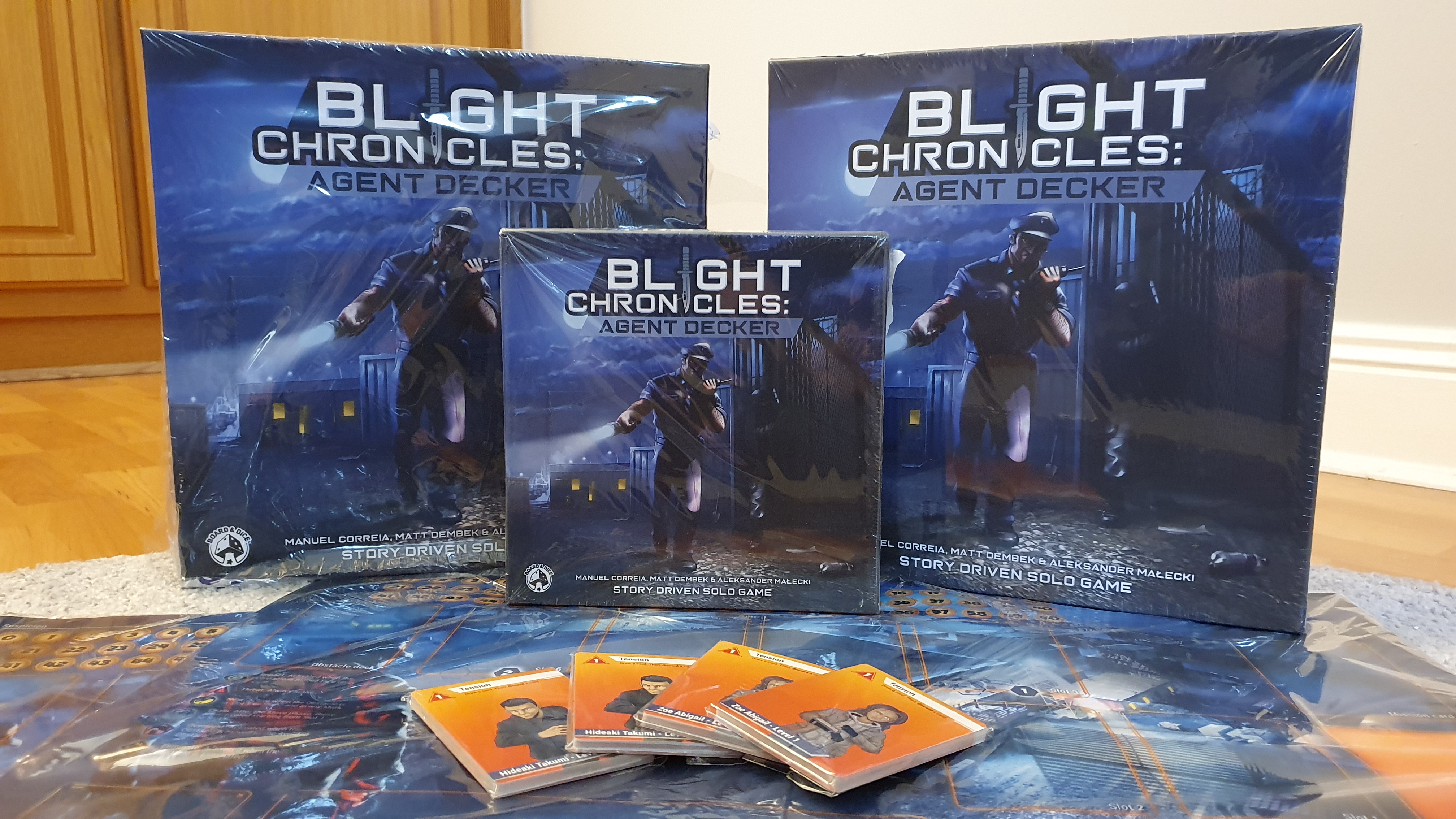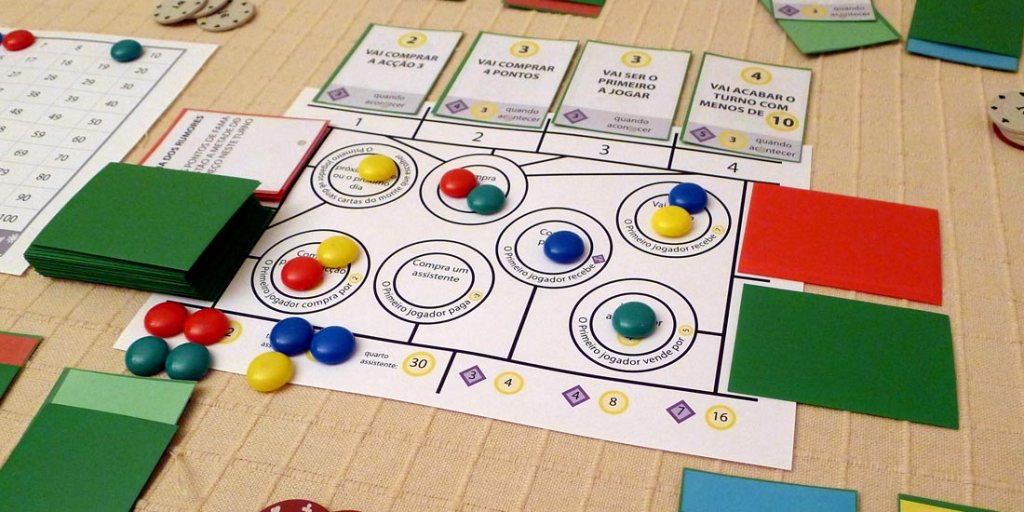Now that I had a playable prototype (with a theme and everything!) it was time to show it to more players. This time however, I didn’t have a playtest group. Not only that, it was July 2020, the height of the COVID-19 pandemic. Everyone was at home in quarantine, and it would have been irresponsible to break it to get someone to playtest my game. Time to get creative!
My cousin Miguel wanted to try it, so I improvised a setup with a tripod and a webcam in order to run a playtest through Skype. Since Cortiça has no hidden information, I could handle the cards for both of us. All he had to do was tell me his move.
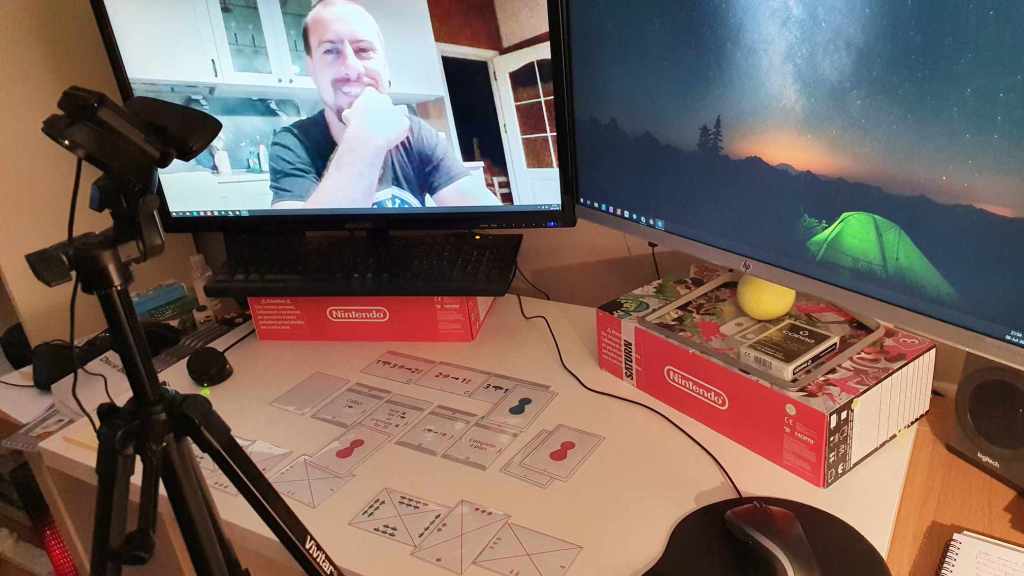
It worked but it was not ideal. The tripod had to be very close to the table and I had to be extra careful not to bump it with either my arms or my feet. It was tricky to light the cards without getting glare on the card sleeves and my camera’s resolution was a bit too low to keep up with the text on the cards. It was finally time to take Tabletop Simulator for a spin.
Recreating the game in Tabletop Simulator was straightforward. Once I had properly formatted files (one image with all the card fronts, another with all the backs), importing the cards was a breeze. That took care of the components! At this stage I didn’t want to get into scripting or automation because the game was still in a very fluid state where it could change drastically from one playtest to the next.

Tabletop Simulator has a lot of potential but its interface often gets in the way, complicating simple things such as tucking a card under another. Even after learning its controls, it still feels like playing a game while wearing boxing gloves. This can affect playtests in a number of ways. Due to its cost and controls, the players who are willing to playtest are often very involved in the hobby. A more casual player would still have to go through its learning curve, and it will color their opinion of the game. In addition, games tend to run longer than they would with a physical prototype.
In this occasion though, it suited me very well. I was even able to find a workaround for several of the technical issues such as its price and interface. Just like my playtest with Miguel, I could run Tabletop Simulator on my machine and share my screen, moving the cards for both players. This allowed me to playtest with people that didn’t own Tabletop Simulator, and they didn’t even have to learn the controls!
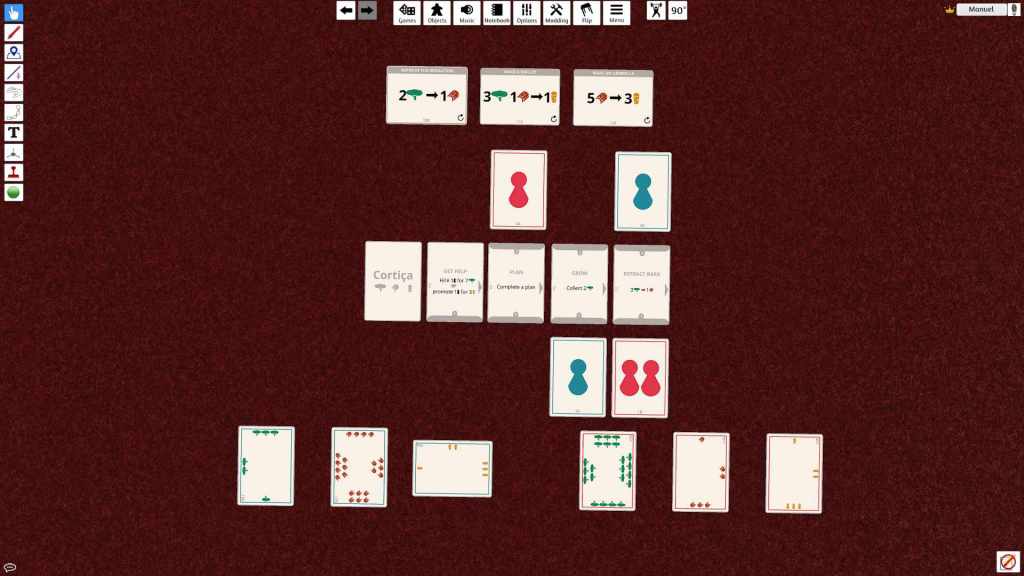
All the while I continued playtesting at home with Sara, always patient and supportive. The game took shape as we tried different strategies and made adjustments. My digital notes gradually turned into the game’s rulebook – but that’s a topic for the next article, where we’ll cover the contest submission.
If you don’t want to miss a post, you can subscribe to get them via e-mail:
